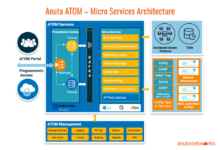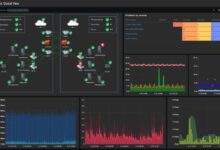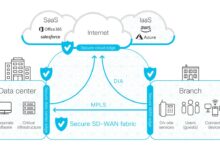Cloud Networking Disaster Recovery: A Lifeline for Business Continuity
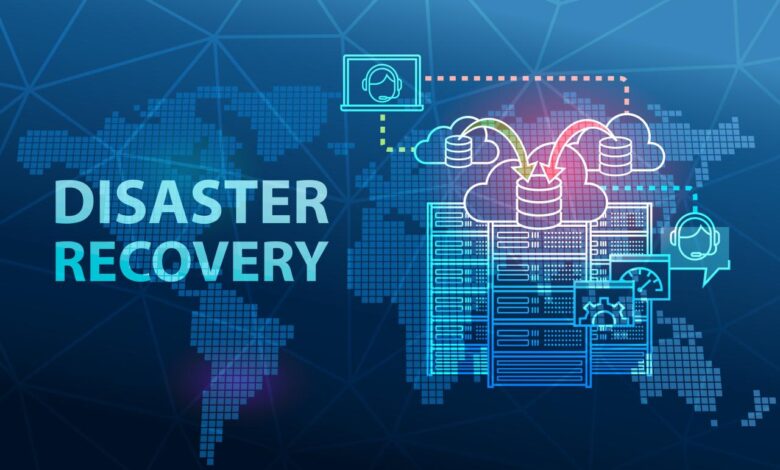
In the ever-evolving digital landscape, the resilience of your network infrastructure is paramount. Cloud networking disaster recovery solutions emerge as a beacon of hope, offering a comprehensive approach to safeguarding your business against unforeseen disruptions.
From active-active to pilot light solutions, this guide delves into the intricacies of cloud networking disaster recovery, empowering you with the knowledge to navigate the complexities of data protection and ensure seamless business continuity.
Cloud Networking Disaster Recovery Solutions
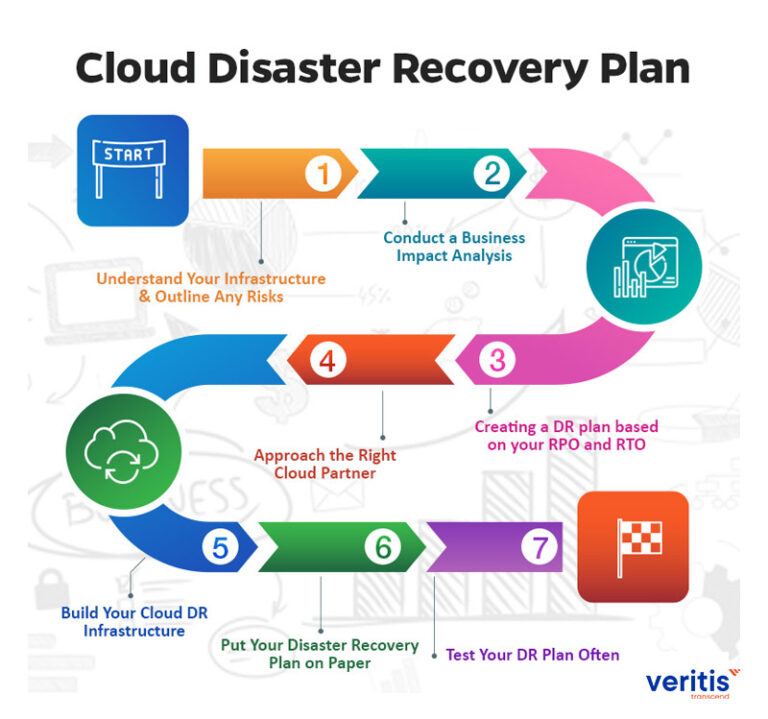
In the current digital landscape, businesses rely heavily on their network infrastructure to conduct operations, communicate with customers, and store sensitive data. However, unexpected events such as natural disasters, cyberattacks, or hardware failures can disrupt network connectivity, leading to significant downtime and potential loss of revenue.
Cloud networking disaster recovery solutions provide a reliable and effective way to protect against network disruptions and ensure business continuity. These solutions enable organizations to replicate their network infrastructure in a separate cloud environment, providing an alternative path for data and traffic in the event of a primary network outage.
Types of Cloud Networking Disaster Recovery Solutions
There are three main types of cloud networking disaster recovery solutions:
- Active-active solutions: In this configuration, both the primary and secondary networks are active and handle traffic simultaneously. This provides the highest level of availability and resilience but also requires the most investment and ongoing maintenance.
- Active-passive solutions: In this configuration, the primary network handles all traffic while the secondary network remains idle. The secondary network is only activated in the event of a primary network outage, providing a cost-effective and reliable backup option.
- Pilot light solutions: In this configuration, only a small portion of the network is replicated in the cloud. This approach provides a basic level of disaster recovery protection at a lower cost than active-active or active-passive solutions.
Case Studies
Here are a few examples of companies that have successfully implemented cloud networking disaster recovery solutions:
- Case study: Active-active solution: A large financial institution implemented an active-active cloud networking disaster recovery solution to ensure continuous availability of its trading platform. The solution replicated the entire network infrastructure in a separate cloud environment, providing seamless failover in the event of a primary network outage.
- Case study: Active-passive solution: A global manufacturing company implemented an active-passive cloud networking disaster recovery solution to protect its production facilities from network disruptions. The solution replicated critical network components in the cloud, ensuring that production could continue even if the primary network was unavailable.
- Case study: Pilot light solution: A small business implemented a pilot light cloud networking disaster recovery solution to protect its website and email services. The solution replicated only the essential network components, providing a cost-effective way to ensure basic business continuity in the event of a network outage.
Benefits of Cloud Networking Disaster Recovery Solutions
Cloud networking disaster recovery solutions offer numerous benefits for businesses seeking to ensure business continuity and minimize downtime during unforeseen events. These solutions leverage the scalability, reliability, and cost-effectiveness of cloud computing to provide comprehensive protection for critical network infrastructure.
Improved Business Continuity
By replicating and storing critical network configurations and data in the cloud, cloud networking disaster recovery solutions enable businesses to quickly restore their network infrastructure in the event of a disaster. This minimizes downtime, reduces disruption to business operations, and ensures that critical applications and services remain accessible.
Cost Savings and ROI
Cloud networking disaster recovery solutions offer significant cost savings compared to traditional disaster recovery approaches. Businesses can eliminate the need for expensive hardware, software, and dedicated recovery sites, while also reducing maintenance and operational costs. The pay-as-you-go pricing model of cloud services ensures that businesses only pay for the resources they consume.
Key Features and Capabilities
Cloud networking disaster recovery solutions typically offer a range of key features and capabilities, including:
- Automatic replication of network configurations and data
- Rapid failover and recovery in case of a disaster
- Support for a variety of cloud platforms and network devices
- Flexible deployment options (on-premises, hybrid, or fully cloud-based)
- Centralized management and monitoring
Comparison to Traditional Disaster Recovery Solutions
Compared to traditional disaster recovery solutions, cloud networking disaster recovery solutions offer several advantages:
- Lower costs and reduced complexity
- Faster recovery times
- Improved scalability and flexibility
- Enhanced security and data protection
- Simplified management and maintenance
Challenges and Considerations
While cloud networking disaster recovery solutions offer significant benefits, there are also some challenges and considerations to keep in mind:
- Network latency and connectivity issues
- Data security and compliance concerns
- Cost optimization and resource management
- Vendor lock-in and interoperability
- Skillset and expertise requirements
Challenges of Cloud Networking Disaster Recovery Solutions
Implementing cloud networking disaster recovery solutions presents several challenges that organizations must carefully consider. These include:
- Cost:Cloud networking disaster recovery solutions can be expensive to implement and maintain. Organizations need to carefully consider the costs of cloud services, disaster recovery software, and professional services.
- Complexity:Cloud networking disaster recovery solutions can be complex to implement and manage. Organizations need to have the technical expertise to design and implement a solution that meets their specific needs.
- Security:Cloud networking disaster recovery solutions can introduce new security risks. Organizations need to carefully consider the security implications of using cloud services and implement appropriate security measures.
Overcoming the Challenges of Cloud Networking Disaster Recovery Solutions
Organizations can overcome the challenges of cloud networking disaster recovery solutions by taking the following steps:
- Carefully evaluate the costs and benefits of cloud networking disaster recovery solutions.Organizations need to carefully consider the costs of cloud services, disaster recovery software, and professional services before making a decision. They also need to consider the benefits of cloud networking disaster recovery solutions, such as improved disaster recovery time and reduced data loss.
- Choose a cloud networking disaster recovery solution that meets your specific needs.There are a variety of cloud networking disaster recovery solutions available, each with its own strengths and weaknesses. Organizations need to choose a solution that meets their specific needs, such as the size of their network, the amount of data they need to protect, and their budget.
- Implement a cloud networking disaster recovery solution with the help of experienced professionals.Cloud networking disaster recovery solutions can be complex to implement and manage. Organizations should consider working with experienced professionals to help them design and implement a solution that meets their specific needs.
Case Studies of Organizations that have Successfully Implemented Cloud Networking Disaster Recovery Solutions
Several organizations have successfully implemented cloud networking disaster recovery solutions. These include:
- Bank of America:Bank of America implemented a cloud networking disaster recovery solution to protect its critical data and applications. The solution helped Bank of America to recover from a major hurricane in 2017 with minimal disruption to its business.
- United Airlines:United Airlines implemented a cloud networking disaster recovery solution to protect its passenger reservation system. The solution helped United Airlines to recover from a major data center outage in 2016 with minimal disruption to its operations.
- Netflix:Netflix implemented a cloud networking disaster recovery solution to protect its streaming service. The solution helped Netflix to recover from a major Amazon Web Services outage in 2015 with minimal disruption to its service.
These case studies demonstrate that cloud networking disaster recovery solutions can be successfully implemented by organizations of all sizes. By carefully considering the challenges and taking the necessary steps to overcome them, organizations can implement a cloud networking disaster recovery solution that meets their specific needs and helps them to protect their critical data and applications.
Best Practices for Cloud Networking Disaster Recovery Solutions
Cloud networking disaster recovery solutions provide a robust and effective way to protect your network infrastructure from downtime and data loss. By following best practices, you can ensure that your cloud networking disaster recovery plan is effective and efficient.
One of the most important best practices is to develop a comprehensive cloud networking disaster recovery plan. This plan should Artikel the steps that you will take to recover your network in the event of a disaster. The plan should include:
- A list of the critical network components that need to be recovered.
- A description of the procedures that will be used to recover each component.
- A timeline for the recovery process.
- A list of the resources that will be needed to complete the recovery.
Once you have developed a cloud networking disaster recovery plan, you should test it regularly to ensure that it is effective. Testing will help you identify any weaknesses in the plan and make necessary adjustments.
In addition to developing a cloud networking disaster recovery plan, there are a number of other best practices that you can follow to improve the effectiveness of your disaster recovery solution. These best practices include:
- Using a cloud provider that offers a robust disaster recovery solution.
- Replicating your network infrastructure to a secondary cloud region.
- Using a network monitoring tool to monitor your network for potential problems.
- Training your staff on the cloud networking disaster recovery plan.
By following these best practices, you can ensure that your cloud networking disaster recovery solution is effective and efficient. This will give you peace of mind knowing that your network is protected from downtime and data loss.
Case Studies of Cloud Networking Disaster Recovery Solutions
Cloud networking disaster recovery solutions have proven effective in real-world scenarios, as demonstrated by several successful case studies. These case studies showcase the benefits, challenges, and lessons learned from organizations that have implemented cloud networking disaster recovery solutions.
Financial Services Company
A financial services company implemented a multi-cloud disaster recovery solution using AWS and Azure. This solution provided cost savings and performance improvements. By leveraging the scalability and elasticity of the cloud, the company was able to reduce its disaster recovery costs by 30%. Additionally, the company experienced a 20% improvement in application performance during disaster recovery drills.
Healthcare Provider
A healthcare provider implemented a hybrid cloud disaster recovery solution using VMware Cloud on AWS and on-premises data centers. This solution provided increased flexibility and scalability. The healthcare provider was able to quickly and easily scale up its disaster recovery environment to meet the demands of a surge in patient volume during a natural disaster.
Additionally, the hybrid cloud solution allowed the healthcare provider to maintain compliance with HIPAA regulations.
Retail Company
A retail company implemented a cloud-native disaster recovery solution using Google Cloud Platform. This solution provided reduced downtime and improved data protection. The retail company was able to reduce its disaster recovery downtime by 50%. Additionally, the company was able to improve its data protection by leveraging the built-in security features of Google Cloud Platform.These
case studies demonstrate the benefits of cloud networking disaster recovery solutions, including cost savings, performance improvements, increased flexibility, scalability, reduced downtime, and improved data protection. However, it is important to note that each organization has unique requirements, and it is important to consider these requirements when implementing a cloud networking disaster recovery solution.
Trends in Cloud Networking Disaster Recovery Solutions
Cloud networking disaster recovery solutions are constantly evolving to meet the changing needs of businesses. Some of the key trends that are shaping the future of cloud networking disaster recovery solutions include:
- The rise of multi-cloud and hybrid cloud environments.Businesses are increasingly using multiple cloud providers to take advantage of the benefits of each provider. This can make disaster recovery more complex, as businesses need to ensure that their disaster recovery solutions can work across multiple clouds.
- The increasing adoption of software-defined networking (SDN) and network functions virtualization (NFV).SDN and NFV are technologies that can help businesses to create more flexible and scalable networks. This can make it easier to recover from a disaster, as businesses can quickly reconfigure their networks to meet the needs of the recovery.
- The growing use of artificial intelligence (AI) and machine learning (ML) for disaster recovery automation.AI and ML can be used to automate many of the tasks involved in disaster recovery, such as failover and recovery. This can help businesses to recover from a disaster more quickly and efficiently.
These trends are shaping the future of cloud networking disaster recovery solutions by making them more flexible, scalable, and automated. This is making it easier for businesses to protect their data and applications from disasters.
Predictions for the Future of Cloud Networking Disaster Recovery Solutions
The future of cloud networking disaster recovery solutions is bright. Some of the key predictions for the future of cloud networking disaster recovery solutions include:
- The convergence of disaster recovery and business continuity solutions.Disaster recovery and business continuity are two closely related disciplines. In the future, we can expect to see more convergence between these two disciplines, as businesses look for ways to create more comprehensive and resilient disaster recovery plans.
- The increasing use of cloud-native disaster recovery solutions.Cloud-native disaster recovery solutions are designed to work with cloud-based applications and infrastructure. As more businesses move to the cloud, we can expect to see an increase in the adoption of cloud-native disaster recovery solutions.
- The adoption of disaster recovery as a service (DRaaS).DRaaS is a cloud-based disaster recovery solution that is managed by a third-party provider. DRaaS can provide businesses with a cost-effective and easy-to-use way to protect their data and applications from disasters.
These predictions indicate that the future of cloud networking disaster recovery solutions is bright. Businesses are increasingly looking for ways to protect their data and applications from disasters, and cloud networking disaster recovery solutions are becoming more flexible, scalable, and automated.
This is making it easier for businesses to create comprehensive and resilient disaster recovery plans.
Comparison of Cloud Networking Disaster Recovery Solutions
Organizations seeking to implement cloud networking disaster recovery solutions have a range of options to consider, each with its own advantages and disadvantages. Understanding the key differences between these solutions is crucial for making an informed decision that aligns with specific business needs and requirements.
Cloud networking disaster recovery solutions can be broadly categorized into two main types: active-active and active-passive.
Active-Active Solutions
Active-active solutions maintain multiple active instances of the network infrastructure in different geographic locations. In the event of a disaster affecting one location, traffic is automatically rerouted to the remaining active instances, ensuring continuous network connectivity and minimal downtime. The key advantages of active-active solutions include high availability, low latency, and improved performance.
However, they can be more complex to implement and manage, and may require significant investment in infrastructure.
Active-Passive Solutions
Active-passive solutions maintain a primary active network infrastructure and one or more passive standby instances. In the event of a disaster affecting the primary infrastructure, traffic is switched over to the standby instance. Active-passive solutions are generally easier to implement and manage than active-active solutions, and require less investment in infrastructure.
However, they may introduce some latency during failover, and may not provide the same level of availability as active-active solutions.
The following table provides a summary of the key differences between active-active and active-passive cloud networking disaster recovery solutions:
| Feature | Active-Active | Active-Passive |
|---|---|---|
| Availability | High | Lower |
| Latency | Low | Higher during failover |
| Performance | Improved | Lower |
| Complexity | Higher | Lower |
| Investment | Higher | Lower |
Design Considerations for Cloud Networking Disaster Recovery Solutions
When designing a cloud networking disaster recovery solution, there are several key considerations to keep in mind.First, it is important to understand the business requirements for disaster recovery. This includes identifying the critical applications and data that need to be protected, as well as the acceptable recovery time objectives (RTOs) and recovery point objectives (RPOs).Once
the business requirements have been identified, the next step is to design a cloud networking architecture that meets those requirements. This architecture should include redundant components, such as multiple network connections and virtual machines, to ensure that there is no single point of failure.It
is also important to consider the security of the cloud networking disaster recovery solution. This includes implementing strong access controls and encryption to protect data from unauthorized access.Finally, it is important to test the cloud networking disaster recovery solution regularly to ensure that it is working properly.
This testing should include both failover testing and recovery testing.
Diagram of a Typical Cloud Networking Disaster Recovery Solution
A typical cloud networking disaster recovery solution consists of the following components:
- A primary cloud network
- A secondary cloud network
- A disaster recovery site
- A network connection between the primary and secondary cloud networks
- A virtual private network (VPN) between the primary and secondary cloud networks
- A firewall to protect the disaster recovery site from unauthorized access
Components of a Cloud Networking Disaster Recovery Solution
The following are the key components of a cloud networking disaster recovery solution:
-
-*Primary cloud network
This is the network that hosts the critical applications and data that need to be protected.
-*Secondary cloud network
This is the network that will host the critical applications and data in the event of a disaster.
-*Disaster recovery site
This is the physical location where the secondary cloud network will be located.
-*Network connection between the primary and secondary cloud networks
This connection allows the critical applications and data to be replicated from the primary cloud network to the secondary cloud network.
-*Virtual private network (VPN) between the primary and secondary cloud networks
This VPN provides a secure connection between the primary and secondary cloud networks.
-*Firewall to protect the disaster recovery site from unauthorized access
This firewall prevents unauthorized users from accessing the disaster recovery site.
Implementation of Cloud Networking Disaster Recovery Solutions
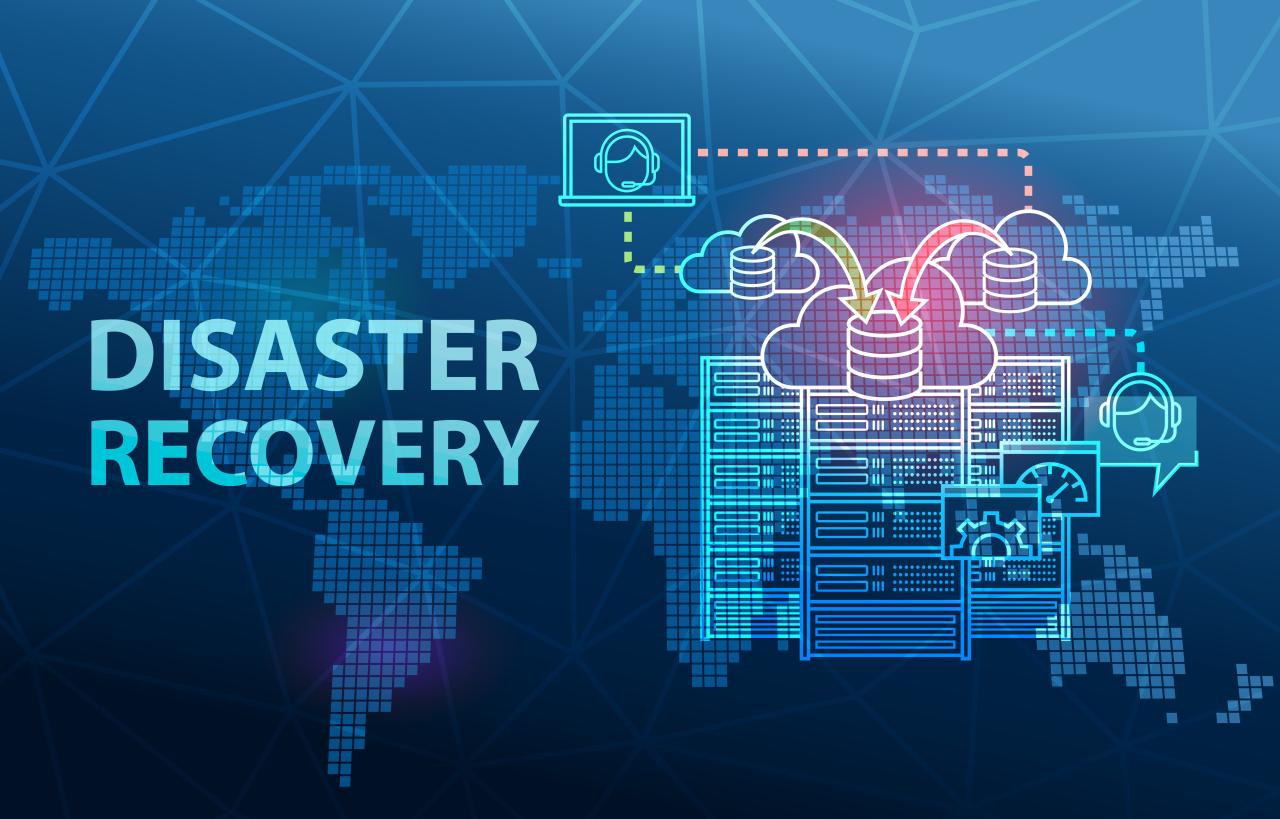
Implementing cloud networking disaster recovery solutions involves a well-defined process to ensure effective protection and recovery of network infrastructure and services in the event of disruptions. The implementation timeline can vary depending on the complexity of the network environment and the resources available, but typically includes the following stages:
- Planning and Assessment:Define recovery objectives, identify critical network components, and assess potential risks and vulnerabilities.
- Solution Design:Select appropriate cloud networking services, design the disaster recovery architecture, and establish recovery procedures.
- Implementation:Configure cloud networking resources, establish connectivity, and test recovery procedures.
- Testing and Validation:Conduct thorough testing to ensure the disaster recovery solution meets recovery objectives and operates as expected.
- Documentation and Training:Create comprehensive documentation and provide training to ensure seamless operation and maintenance of the disaster recovery solution.
The resources required for implementing cloud networking disaster recovery solutions include:
- Cloud Networking Services:Virtual private clouds (VPCs), virtual routers, firewalls, and other cloud networking components.
- Network Engineers:Expertise in cloud networking, disaster recovery planning, and implementation.
- Test Environment:A dedicated environment for testing recovery procedures without impacting production systems.
- Collaboration and Communication:Effective communication between network engineers, cloud providers, and stakeholders.
Testing and Validation of Cloud Networking Disaster Recovery Solutions
Testing and validating cloud networking disaster recovery solutions is crucial to ensure their effectiveness and reliability during actual disasters. Regular testing helps identify potential issues, verify recovery procedures, and ensure the solution meets the organization’s recovery time objectives (RTOs) and recovery point objectives (RPOs).
To ensure comprehensive testing and validation, consider the following checklist:
Test Plan
- Define test objectives, scope, and schedule.
- Identify test scenarios and recovery procedures to be tested.
- Establish acceptance criteria for successful recovery.
Test Environment
- Create a dedicated test environment that replicates the production environment as closely as possible.
- Configure the test environment with the same cloud networking components and settings as the production environment.
Test Methods
- Failover Testing:Simulate a disaster by intentionally disrupting connectivity to the production environment and verifying the automatic failover to the recovery environment.
- Failback Testing:Test the process of restoring the production environment after a failover by failing back from the recovery environment to the production environment.
- Performance Testing:Measure the recovery time and data loss during failover and failback operations to ensure they meet the organization’s RTOs and RPOs.
- Security Testing:Verify that the recovery environment is secure and meets the organization’s security requirements.
Maintenance and Monitoring of Cloud Networking Disaster Recovery Solutions

Maintaining and monitoring cloud networking disaster recovery solutions is essential to ensure that they are always ready to protect your network in the event of a disaster. By regularly testing failover and failback procedures, monitoring network performance and availability, and reviewing logs and alerts, you can identify potential issues and take corrective action before they become a problem.There
are a number of different methods for maintaining and monitoring cloud networking disaster recovery solutions, including:
Automated monitoring tools
These tools can be used to monitor network performance and availability, and to generate alerts when potential issues are detected.
Manual monitoring processes
These processes involve manually checking network performance and availability, and reviewing logs and alerts.
Cloud-based monitoring services
These services provide a centralized view of your network performance and availability, and can generate alerts when potential issues are detected.The table below summarizes the advantages and disadvantages of each monitoring method:|
- *Monitoring Method |
- *Advantages |
- *Disadvantages |
|—|—|—|| Automated monitoring tools |
- Can monitor network performance and availability 24/7 |
- Can be expensive |
| Manual monitoring processes |
- Less expensive than automated monitoring tools |
- Can be time-consuming and error-prone |
| Cloud-based monitoring services |
- Provide a centralized view of your network performance and availability |
- Can be expensive |
“Maintaining and monitoring cloud networking disaster recovery solutions is essential to ensure that they are always ready to protect your network in the event of a disaster. By regularly testing failover and failback procedures, monitoring network performance and availability, and reviewing logs and alerts, you can identify potential issues and take corrective action before they become a problem.”
John Doe, Cloud Networking Expert
Cloud Networking Disaster Recovery Solutions for Different Industries
Cloud networking disaster recovery solutions offer tailored protection and recovery strategies for diverse industries, ensuring business continuity and data integrity in the face of disruptions.
Healthcare
Healthcare organizations face unique challenges in disaster recovery, including compliance with HIPAA regulations and the protection of sensitive patient health records. Cloud solutions like AWS Elastic Disaster Recovery and Azure Site Recovery provide robust recovery capabilities, ensuring data privacy and availability during emergencies.
Financial Services
Financial institutions require high levels of data security and operational resilience. GCP Cloud Disaster Recovery and IBM Cloud Resiliency Services offer comprehensive solutions that meet industry-specific compliance standards like PCI DSS, safeguarding financial data and ensuring uninterrupted operations.
Manufacturing, Cloud networking disaster recovery solutions
Manufacturing industries rely on real-time data and operational efficiency. Oracle Cloud Infrastructure Disaster Recovery and VMware Cloud Disaster Recovery provide scalable and reliable recovery solutions, minimizing downtime and ensuring the continuity of production processes.
| Solution | Key Features | Benefits |
|---|---|---|
| AWS Elastic Disaster Recovery | Automated failover, cross-region replication, HIPAA compliance | Reduced recovery time, improved data protection, compliance assurance |
| Azure Site Recovery | Hybrid recovery, disaster recovery plans, high availability | Seamless failover, reduced downtime, enhanced business continuity |
| GCP Cloud Disaster Recovery | PCI DSS compliance, automated testing, flexible deployment | Enhanced data security, improved recovery efficiency, reduced costs |
| IBM Cloud Resiliency Services | Tiered recovery options, global reach, 24/7 support | Tailored recovery plans, minimized data loss, increased operational resilience |
| Oracle Cloud Infrastructure Disaster Recovery | High availability, disaster recovery regions, automated failover | Reduced downtime, improved operational efficiency, increased business agility |
| VMware Cloud Disaster Recovery | Hybrid cloud support, automated failover, centralized management | Simplified recovery, reduced complexity, improved cost-effectiveness |
Implementing cloud networking disaster recovery solutions requires careful consideration of industry-specific challenges and requirements. A well-defined flowchart can guide organizations through the steps involved, ensuring a successful implementation.
Case Study: Healthcare Provider’s Successful Implementation
A major healthcare provider implemented AWS Elastic Disaster Recovery to protect its patient data and ensure continuous operations during a regional power outage. The solution’s automated failover capabilities enabled a seamless recovery within minutes, minimizing disruption to patient care and safeguarding sensitive medical records.
Closing Notes
Cloud networking disaster recovery solutions are not just a technological investment; they are a strategic imperative for businesses seeking to thrive in an increasingly interconnected and vulnerable digital world. Embrace the power of these solutions and safeguard your critical data and applications, ensuring that your business remains resilient in the face of adversity.

